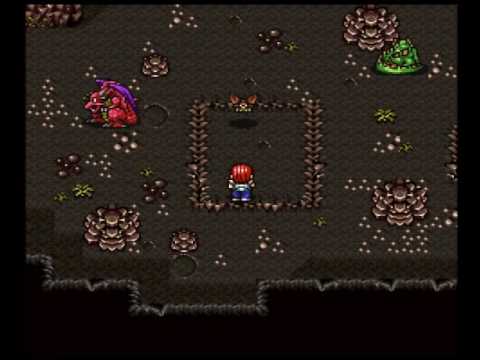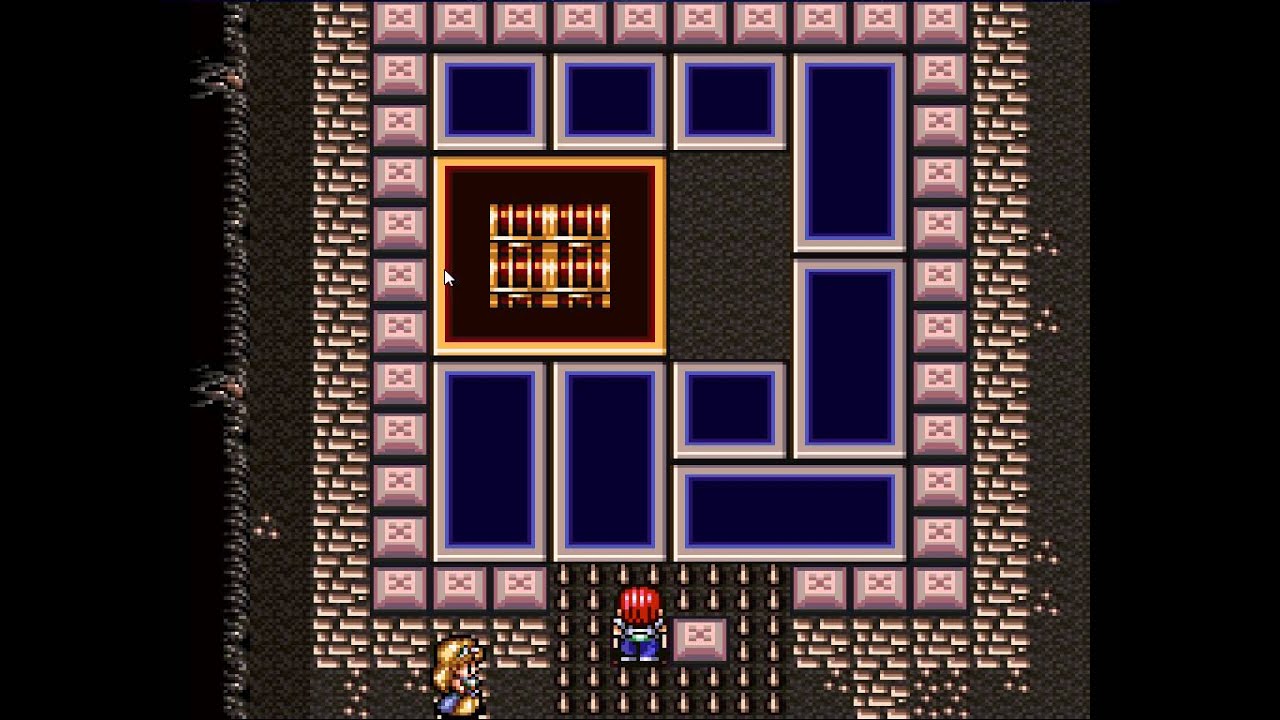
Taito - Tested on the Super NES in 2024 by Dennis Deuster, with additional commentary by docower
 In the run-up to Christmas I did something: I built a mini games console for my old favorites from the SNES and C64 era. And as the first gem from the pool of great games of the time, I picked one of the great JRPGs of the 16-bit era: Lufia II – Rise of the Sinistrals. The game was ranked number 34 on IGN's "Top 100 SNES Games of All Time". And in my opinion it definitely deserves a place in this gaming Olympus. But first lets talk about the game itself.
In the run-up to Christmas I did something: I built a mini games console for my old favorites from the SNES and C64 era. And as the first gem from the pool of great games of the time, I picked one of the great JRPGs of the 16-bit era: Lufia II – Rise of the Sinistrals. The game was ranked number 34 on IGN's "Top 100 SNES Games of All Time". And in my opinion it definitely deserves a place in this gaming Olympus. But first lets talk about the game itself.
Lufia II is, not surprisingly, the successor to “Lufia & The Fortress Of Doom” from 1993. The second part was first released in Japan in 1995 and also in Germany as a PAL version in 1997 and is set before its predecessor. The story revolves around how Maxim and his friends defeat the Sinistrals before the story of “Lufia & The Fortress Of Doom” and lays the foundation for humanity's war with these supernatural beings.

Lufia II shows significant improvements compared to its predecessor. It was already very innovative back then that there were no more random fights and you could avoid enemies. Absolutely unusual for the JRPG genre at the time, just think of the Final Fantasy or Dragon Quest series.
Rise of the Sinistrals also offered other nice additions to Lufia I: There were a large number of puzzles that became increasingly complex as the story progressed and sometimes encouraged you to think outside the box. Some of them were so incredibly difficult that I couldn't help but look up the solution online after countless failed attempts. The puzzles, some of which were really difficult, were probably one of the reasons why I never played through Lufia II back then. Because in these decelerated offline times there were only a few opportunities to get solution material. Today one click is enough.

The game mechanics are quite simple: you usually end up in a city and its residents are struggling with a problem. Sometimes it's about political conflicts, sometimes the village elder has disappeared or a gemstone is missing. Of course, our crew is there and becomes the problem solver by defeating the “Monster of the Week”. We are then allowed to go through the next shrine and continue exploring the world. Later you will have the opportunity to travel by ship - initially automated, later self-sufficient. Our ship later becomes a submarine and finally an airship, so that you can travel the open world as you wish.

In addition to the story, the gameplay focuses primarily on the puzzles and fights mentioned. In the latter there are the options attack, magic, items and the so-called “IP attacks”. The more damage a character takes, the fuller the IP bar becomes, enabling special attacks that are linked to the equipped items. A nice concept. There are also so-called “capsule monsters”, automatically acting companions that you can feed and thus upgrade over the course of the game. However, they are in no way essential to mastering the game, but rather a decorative accessory.

Another special feature of the game is the so-called "ancient cave”. Basically a game within a game where you start in a kind of rogue-lite at level 1 in randomly created levels and get items from red boxes that you lose when you leave the cave, as well as items from blue boxes that you can keep and with which you start the next time you go to level 1 of the cave. The goal is to reach level 99 and collect various Iris items, which only have collector value. This time again I put a few hours into this “minigame”.
The story of Lufia II is basically told quickly: Our hero Maxim is visited by a mysterious woman who tells him that it is his destiny to use his fighting strength to save the world from a big one threat to save. These are the eponymous Sinistrals, divine beings who want to subjugate the world and ultimately destroy it.
During his travels, Maxim meets fellow warriors who support him and ultimately help to free the world from the Sinistrals. The boss fights in general are not necessarily challenging. The only boss that really annoyed me a bit was a spider that appears pretty early in the game. But after I looted the boss's camp beforehand, I found a weapon that made this fight easy too. Even the main power of the game, the Sinistrals, are basically no challenge. That's a bit of a shame, but maybe I was just overleveled at the time.
Rating
| Pro | Contra |
|---|---|
 ·No random encounters
·No random encounters·Ancient cave |
 ·Some easy late game boss fights
·Some easy late game boss fights |
 Super! The game itself still plays smoothly today and has basically aged quite well. For a 30-year-old title, it actually looks pretty good if you sit far enough away from the TV. And the soundtrack is also really good and actually deserves a modern adaptation. Maybe there will even be a remake with graphics and sound updates. Remakes are clearly in vogue. And why not use one of the best JRPGs of its time? I would happily play it again.
Super! The game itself still plays smoothly today and has basically aged quite well. For a 30-year-old title, it actually looks pretty good if you sit far enough away from the TV. And the soundtrack is also really good and actually deserves a modern adaptation. Maybe there will even be a remake with graphics and sound updates. Remakes are clearly in vogue. And why not use one of the best JRPGs of its time? I would happily play it again.
Commentary by docower
| Pro | Contra |
|---|---|
 ·Music
·Music |
 ·Puzzles
·Puzzles·Super deformed battle characters ·Limited number of dungeon types ·Maxim |
Meh. Oh boy... the review brings up memories. But first: I like the review! And secondly: This is my personal opinion, but Lufia II almost cost me my hobby.
I've been a fan of role-playing games since 1993. Explore cities, learn stories, level up characters. Not much came to Europe, but what I played made me with fall in love with the genre. From the mid-90s onwards, things even got better with turn-based role-playing games. In the fall of 96 I treated myself to Breath of Fire 2, then in May 97 I got my new PlayStation Suikoden.
The stories became more epic, the graphics more detailed, the relationships with worlds and characters more intense.
And then Nintendo released Lufia II in the early summer of 97. It was a great fit for me because I had a long vacation between secondary school and apprenticeship, so a role playing game like this came in handy. And I've never been so disappointed.
The combat system was rudimentary, the enemies were not animated (just looks like I wobble with my mouse cursor to prevent Windows from locking up), and the sprites were mirrored during the attacks. The characters were super squeezed in the fights, and there were only a handful of different dungeon layouts that were largely puzzle-based. The story was nice, but superficial, and Maxim was an ass for what he did to Tia. And then you couldn't even change party members freely!
The only thing that excited me was the music. And since I was inexperienced at the time and something like “Stop if you're not having fun” wasn't on my radar, I struggled through the game - and then didn't play a new video game again until February '98.
There are many great role-playing games that have one or two characteristics of Lufia, but the combination was a total fun killer for me. Funnily enough, for example, I really like Lufia I and “Ruins of Lore,” which was released on the GBA!
Over the years, I've reconnected with many games that I didn't like when I first played them - but Lufia II wasn't one of them. I'll never like that. It even got to the point where I ultimately sacrificed the cartridge as a case for an English patched Seiken Densetsu 3.
I know that this is of course unfair and an unfortunate coincidence of “taste doesn't fit” and “personal development doesn't fit” - so I thought I shared Dennis' review, which seems to be what the general public thinks about this game :)